Looking for a sweet treat that's impressive but won't have you slaving away in the kitchen all day? This Otap recipe is your new best friend!
We're taking a shortcut with store-bought puff pastry to create these crispy, flaky Filipino cookies that are typically pretty labor-intensive. Infused with ginger (or luya as it's called in the Philippines), these addictive little spirals are perfect with your afternoon coffee or tea. They're a beloved snack from Cebu that'll make you look like a baking pro, even if you're not.
Trust me, once you try these golden, sugar-coated goodies, you'll be making them on repeat.
Jump to:

Why You'll Love This Recipe
- Quick & Easy: Using store-bought puff pastry cuts the preparation time in half while maintaining that authentic flaky texture.
- Perfect Balance: The warming ginger flavor complements the buttery, sweet layers for an irresistible taste.
- Impressive Results: These beautiful pastries look professionally made with minimal effort.
- Cultural Connection: Experience a beloved Filipino treat from Cebu with our modern, accessible approach.
- Versatile: Enjoy as a snack with tea, coffee, or transform into an elegant dessert with ice cream.
Ingredients
This streamlined ingredient list combines convenience with authenticity. Store-bought puff pastry provides the perfect flaky layers without hours of work, while coconut oil adds traditional Filipino flavor and helps achieve that signature crispy texture.
The superfine sugar creates a delicate, even coating that caramelizes beautifully, and ginger powder infuses the pastry with warm, aromatic notes that honor the spice traditions of Filipino cuisine.
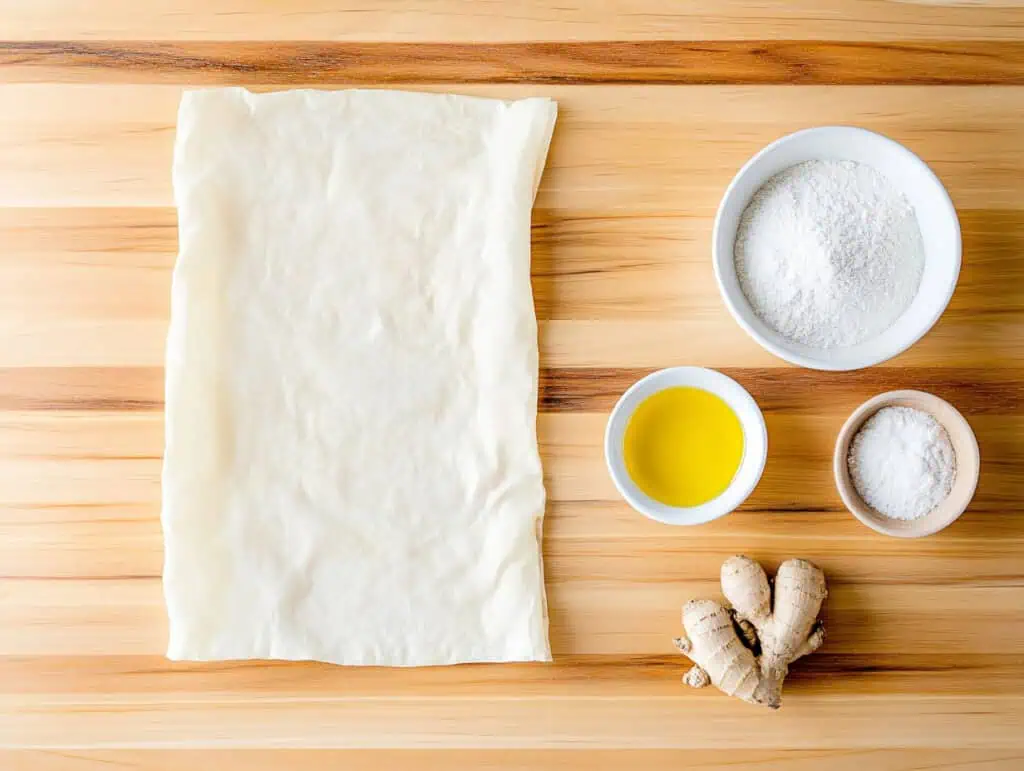
For the Pastry:
- 1 packet (17.3 oz/490g) frozen puff pastry, thawed according to package directions
- ½ cup (120ml) melted coconut oil for brushing
- All-purpose flour for dusting
For the Sugar Coating:
- 1 cup (200g) superfine cane sugar
- 2 tablespoons ginger powder
Equipment
- Rolling Pin: Essential for thinning the puff pastry to the proper thickness, ensuring those delicate, flaky layers.
- Sharp Knife: For cleanly cutting the pastry log into discs without compressing the layers.
- Silicone Baking Mat or Parchment Paper: Prevents sticking and makes cleanup easier while ensuring even heat distribution.
- Baking Sheets: Standard half-sheet pans provide enough space for proper air circulation and even browning.
- Pastry Brush: For applying coconut oil evenly without disturbing the delicate pastry layers.
- Wire Cooling Rack: Ensures your Otap stays crispy while cooling by allowing air to circulate underneath.
- Measuring Cups and Spoons: For accurate ingredient measurements, essential for consistent results.
- Airtight Container: For proper storage to maintain that perfect crispness.
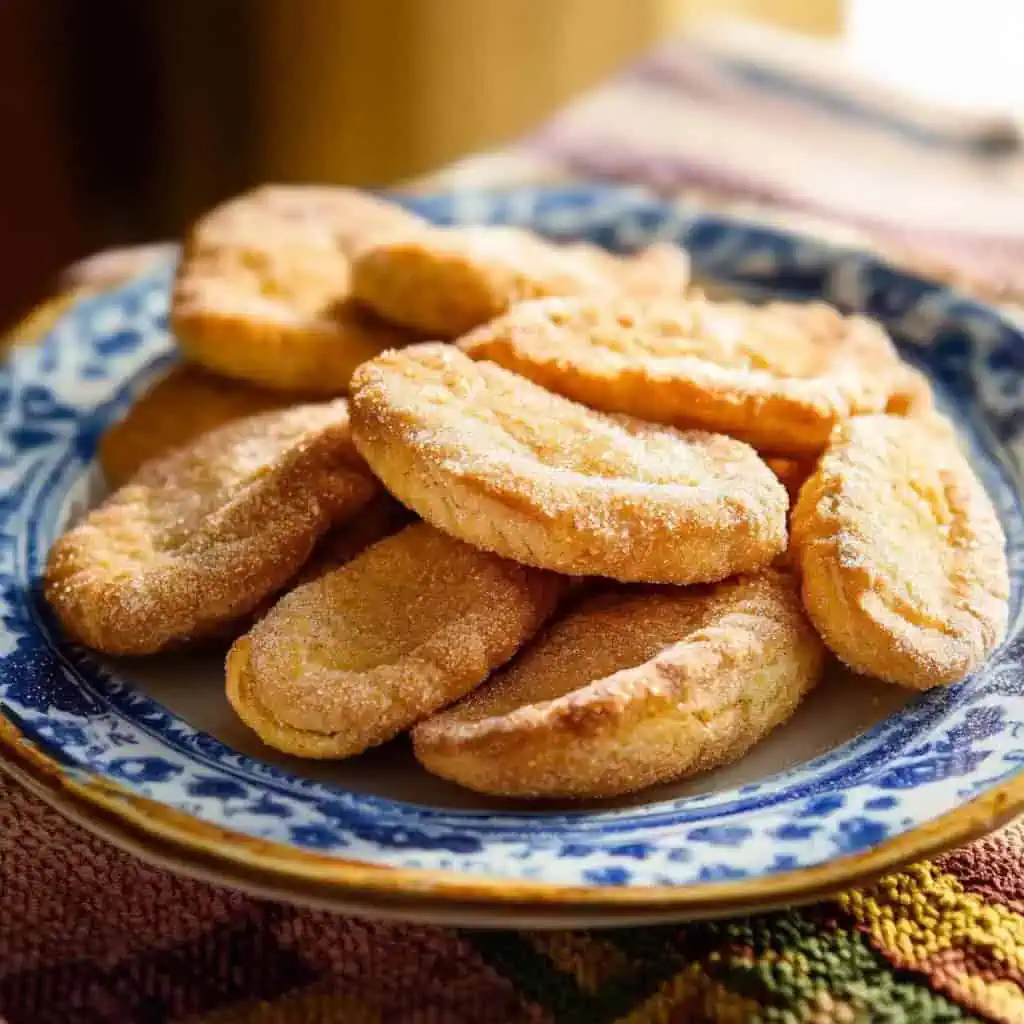
How To Make
- Take the puff pastry out of the freezer and let it thaw according to the package directions, usually about 40 minutes at room temperature. While waiting, mix the superfine sugar and ginger powder together in a shallow plate until well combined with no lumps, then set aside. Preheat your oven to 400°F and line your baking sheets with silicone mats or parchment paper.
- When the pastry is thawed but still cool, place it on a lightly floured surface. Roll it out to about ½ centimeter thickness, making it as thin as possible without tearing. Starting from one of the long edges, carefully lift the edge with your fingertips and begin rolling the dough into a tight cylinder, like you're making a Swiss roll. Once completely rolled, gently press the edge to seal it.
- Use a sharp knife to cut the log into discs about 1 cm thick. Take one disc at a time and position it with the spiral pattern facing up. Dust your work surface and rolling pin with a little flour to prevent sticking. Roll each disc into a thin oval shape, about 3-4 inches long and 2 inches wide, working gently to avoid tearing.
- Brush both sides of each oval with melted coconut oil, then immediately dip both sides into the ginger-sugar mixture to coat them evenly. Place the coated pastries on your prepared baking sheets, leaving about 1 inch between each piece since they'll expand a bit during baking.
- Bake in the preheated oven for 10-12 minutes, until the Otap turns a beautiful golden brown and the sugar has caramelized. Watch them carefully after 8 minutes as they can burn quickly due to the high sugar content. When done, remove from the oven and let them rest on the baking sheet for 5 minutes before carefully transferring to a wire rack to cool completely, which takes about 10 more minutes. Enjoy once fully cooled!

Tips from Lola's Kitchen
- Perfect Temperature Control: Keep your puff pastry cool but pliable. If it gets too warm and soft while you're working with it, pop it in the refrigerator for 10 minutes to firm up before continuing.
- The Secret to Ultra-Thin Pastry: For authentic Otap texture, roll each disc with gentle, even pressure. Start from the center and work outward in all directions to maintain even thickness.
- Sugar Technique: Apply the sugar coating immediately after brushing with coconut oil while it's still wet. This helps the sugar adhere properly for that perfect caramelized crunch.
- Prevent Sticking: If your kitchen is warm, work with small batches of dough at a time, keeping the rest refrigerated until needed.
- Golden Perfection: The perfect Otap has an even golden color. If your oven has hot spots, rotate the baking sheet halfway through baking for uniform results.
- Cooling Completely: Allow Otap to cool completely before storing. Any residual heat will create steam in a container, making them lose their crispness.
- Authentic Flavor Boost: For a more traditional Filipino twist, add a drop of pandan extract to your coconut oil before brushing on the pastry.
Substitutions
- Puff Pastry: If store-bought puff pastry isn't available, you can use phyllo dough layered with coconut oil, though the texture will be different. For a more authentic approach, you can make traditional laminated dough from scratch.
- Coconut Oil: Unsalted butter can be substituted for a richer flavor, though it will change the authentic taste. Ghee (clarified butter) is another good alternative that has a higher smoke point.
- Ginger Powder: Cinnamon makes a wonderful alternative if ginger isn't your favorite. You can also use a blend of warm spices like cardamom, nutmeg, and allspice for a unique twist.
- Superfine Sugar: If you don't have superfine sugar, pulse regular granulated sugar in a food processor for 20-30 seconds until it's finer in texture. Avoid powdered sugar as it contains cornstarch that can affect the caramelization.
- Flavor Variations: Add 1 teaspoon of vanilla extract to the coconut oil for a vanilla-infused Otap, or mix 1 tablespoon of orange zest into the sugar coating for a citrus version.
Troubleshooting
- Pastry Unraveling While Baking: Your initial roll might have been too loose. Make sure to roll the pastry log very tightly before cutting into discs. Also, gently press the edge to seal it well.
- Sugar Burning Before Pastry Is Done: Your oven might be running hot. Reduce temperature to 375°F and extend baking time slightly. You can also place a sheet of foil loosely over the top if they're browning too quickly.
- Pastry Not Crispy Enough: You may not have rolled the pastry thin enough. The thinner you roll each disc, the crispier your Otap will be. Also ensure you're baking long enough for the moisture to evaporate.
- Ginger Flavor Too Strong/Weak: Adjust the ginger powder to your taste preference. Fresh ginger isn't recommended as the moisture can affect texture, but you can add ginger extract (¼ teaspoon) for stronger flavor without additional moisture.
- Otap Sticking to Baking Sheet: Make sure your parchment paper or silicone mat is clean and free from residue. Allow the Otap to cool for the full 5 minutes on the baking sheet before attempting to move them.
- Uneven Browning: Your oven may have hot spots. Rotate the baking sheet halfway through baking and consider using an oven thermometer to verify temperature accuracy.
Storage & Reheating
- Counter Storage: Store completely cooled Otap in an airtight container at room temperature for up to 1 week. Place parchment paper between layers to prevent them from sticking together and absorbing moisture from each other.
- Extending Freshness: Add a small food-grade silica gel packet to the container (like those found in packaged seaweed or jerky) to absorb any moisture and keep the Otap crisp longer.
- Freezer Storage: Freeze completely cooled Otap in an airtight container with parchment between layers for up to 3 months. Thaw at room temperature for 30 minutes before serving.
- Refreshing Stored Otap: If your Otap loses its crispness, place them on a baking sheet in a 300°F (150°C) oven for 3-5 minutes, then allow to cool completely on a wire rack before serving or storing again.
- Never Refrigerate: The humidity in the refrigerator will make Otap soggy. Always store at room temperature or freeze.
- Reheating From Frozen: You can place frozen Otap directly in a 300°F oven for 5-7 minutes to refresh without thawing first.
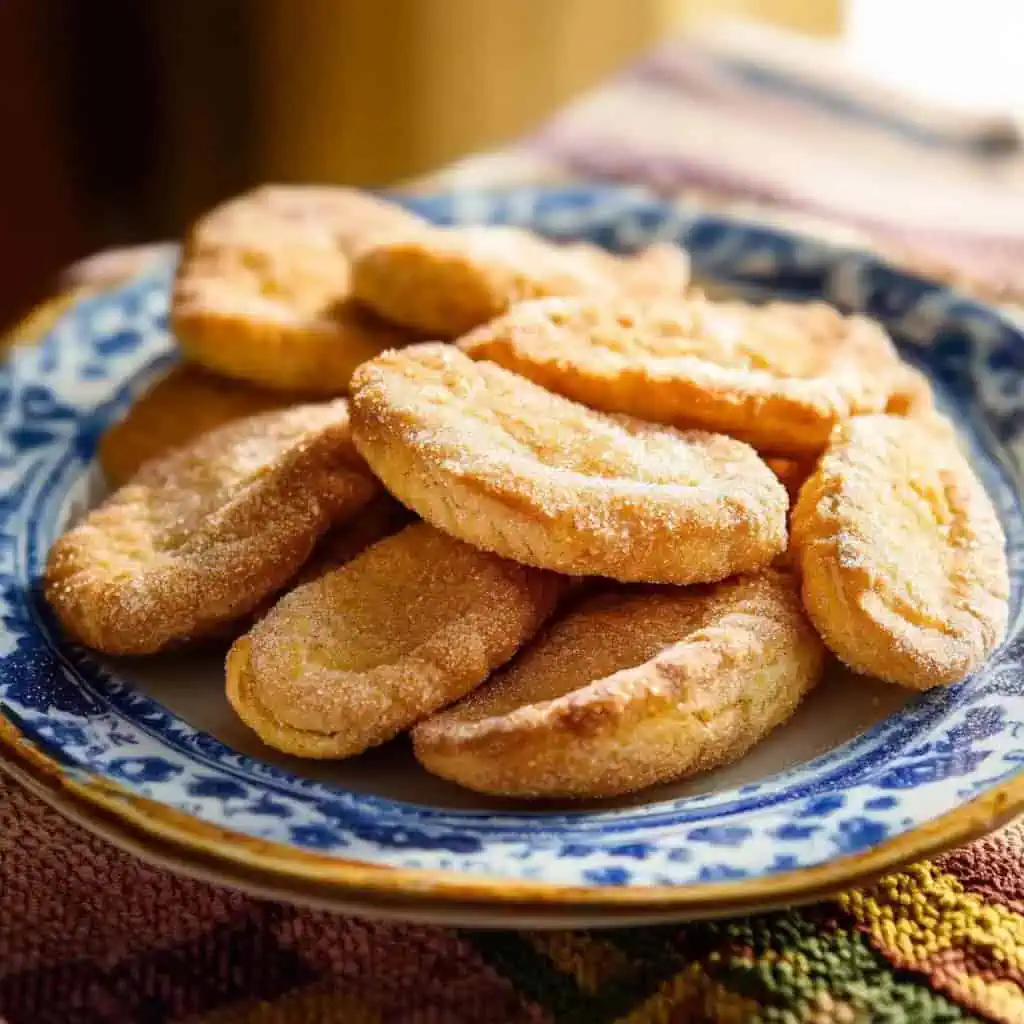
FAQ
What makes Otap different from similar pastries like palmiers?
While Otap shares similarities with French palmiers, it has distinct characteristics: it's typically thinner, crispier, and traditionally made with coconut oil rather than butter. The oval shape and ginger flavor also distinguish it as a unique Filipino pastry with its own cultural heritage.
Can I prepare Otap in advance for a party?
Absolutely! You can prepare the Otap up to the shaping stage, freeze the unbaked pieces on a baking sheet, then transfer to a freezer bag once solid. When ready to bake, thaw for 20 minutes, apply coconut oil and sugar coating, then bake according to instructions. Alternatively, bake them up to 3 days ahead and store in an airtight container.
Why is my Otap not as flaky as store-bought versions?
Traditional Otap uses a different lamination process than commercial puff pastry. For extra flakiness, ensure your puff pastry is very cold when working with it, roll it very thin, and make sure you're creating tight spirals when forming the initial log. The coconut oil also contributes to the characteristic flakiness.
Can I make this recipe without sugar for a less sweet version?
The sugar coating is essential for the characteristic crispy texture and caramelization of Otap. However, you can reduce it by about 25% and still achieve good results. For a truly sugar-free version, you would need to modify the recipe significantly, which would create a different pastry altogether.
How do I know when my Otap is perfectly done?
The perfect Otap should be golden brown with a shiny, caramelized surface. The edges will be slightly darker than the center. When tapped gently, it should feel firm and make a slight hollow sound. If it feels soft or doughy, it needs more time.
Can I double the recipe for a large gathering?
Yes, this recipe doubles beautifully. Just be sure to work in batches and keep unused puff pastry refrigerated until you're ready to use it. You may need to rotate baking sheets in the oven for even baking if cooking multiple batches simultaneously.
What's the origin of Otap?
Otap (sometimes spelled "Utap") originated in Cebu, Philippines. It evolved during the Spanish colonial period as a Filipino adaptation of European pastry techniques, using local ingredients like coconut oil instead of butter. The name "Otap" is believed to come from local Cebuano dialect, though its exact etymology remains debated among food historians.
What's the best way to serve Otap for a traditional Filipino experience?
For an authentic Filipino merienda (afternoon snack) experience, serve Otap with hot salabat (ginger tea) or strong black coffee. In Cebu, it's traditionally enjoyed as a sweet counterpoint to savory snacks during mid-afternoon gatherings with family and friends.
Related
Looking for other recipes like this? Try these:
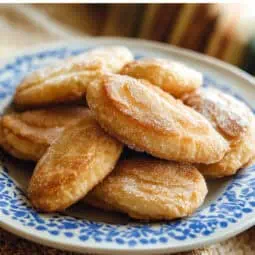
Homemade Otap Recipe
Equipment
- Rolling Pin Essential for thinning the puff pastry to the proper thickness
- Sharp knife For cleanly cutting the pastry log into discs
- Silicone Baking Mat or Parchment Paper Prevents sticking and makes cleanup easier
- Baking sheets Standard half-sheet pans work best
- Pastry brush For applying coconut oil evenly
- Wire cooling rack Ensures your Otap stays crispy while cooling
- Measuring cups and spoons For accurate ingredient measurements
- Airtight container For proper storage
Ingredients
- For the Pastry:
- 1 packet 17.3 oz/490g frozen puff pastry thawed according to package directions
- ½ cup 120ml melted coconut oil for brushing
- All-purpose flour for dusting
- For the Sugar Coating:
- 1 cup 200g superfine cane sugar
- 2 tablespoons ginger powder luya
Instructions
- Take the puff pastry out of the freezer and let it thaw according to the package directions, usually about 40 minutes at room temperature. While waiting, mix the superfine sugar and ginger powder together in a shallow plate until well combined with no lumps, then set aside. Preheat your oven to 400°F and line your baking sheets with silicone mats or parchment paper.
- When the pastry is thawed but still cool, place it on a lightly floured surface. Roll it out to about ½ centimeter thickness, making it as thin as possible without tearing. Starting from one of the long edges, carefully lift the edge with your fingertips and begin rolling the dough into a tight cylinder, like you're making a Swiss roll. Once completely rolled, gently press the edge to seal it.
- Use a sharp knife to cut the log into discs about 1 cm thick. Take one disc at a time and position it with the spiral pattern facing up. Dust your work surface and rolling pin with a little flour to prevent sticking. Roll each disc into a thin oval shape, about 3-4 inches long and 2 inches wide, working gently to avoid tearing.
- Brush both sides of each oval with melted coconut oil, then immediately dip both sides into the ginger-sugar mixture to coat them evenly. Place the coated pastries on your prepared baking sheets, leaving about 1 inch between each piece since they'll expand a bit during baking.
- Bake in the preheated oven for 10-12 minutes, until the Otap turns a beautiful golden brown and the sugar has caramelized. Watch them carefully after 8 minutes as they can burn quickly due to the high sugar content. When done, remove from the oven and let them rest on the baking sheet for 5 minutes before carefully transferring to a wire rack to cool completely, which takes about 10 more minutes. Enjoy once fully cooled!
Tips from Lola's Kitchen
- Perfectly Thin Pastry: For authentic Otap texture, roll the dough as thin as possible without tearing it. This creates those delicate, crispy layers.
- Temperature Matters: Make sure your puff pastry is properly thawed but still cool. If it becomes too warm, place it in the refrigerator for 10-15 minutes before rolling.
- Sugar Crystal Size: The superfine sugar creates the perfect crispy exterior. If you only have granulated sugar, pulse it in a food processor for a few seconds to make it finer.
- Uniform Pieces: Try to cut the log into equal-sized pieces for even baking.
- Golden Not Burnt: Otap should be golden brown, not dark brown. The high sugar content can burn quickly, so watch carefully during the final few minutes of baking.
- Fresh Ginger Alternative: If you prefer a stronger ginger flavor, you can add ¼ teaspoon of ginger extract to the coconut oil before brushing.
Nutrition
The Story Behind Otap
Otap (sometimes spelled "Utap") is a beloved Filipino pastry that originated in the vibrant province of Cebu, located in the central Visayas region of the Philippines. This oval-shaped, flaky cookie has been delighting Filipinos for generations and stands as one of Cebu's most famous culinary contributions.
The story of Otap is intertwined with the fascinating cultural exchange that shaped Filipino cuisine. During the Spanish colonial period (1565-1898), many European culinary techniques were introduced to the Philippines, including pastry-making. Most food historians believe Otap evolved as a local adaptation of European pastries, specifically drawing inspiration from French techniques of lamination similar to those used in palmiers or elephant ears.
What makes Otap uniquely Filipino is the ingenious substitution of coconut oil for butter in the traditional lamination process. This adaptation was born out of necessity in the tropical Philippine climate, where butter quickly softens in the heat, making traditional puff pastry difficult to work with. The use of coconut oil—abundant in the Philippines—created a distinct texture and flavor profile that became characteristic of authentic Otap.
The name "Otap" itself has mysterious origins, with some suggesting it derives from local Cebuano dialect. Others point to possible connections with the prominent French-Filipino Lhuillier family of Cebu, who may have influenced the development of this European-inspired treat. While the exact etymology remains debated, what's certain is that Otap became firmly established as a Cebuano specialty by the early 20th century.
Traditional Otap-making is a labor-intensive process, requiring skillful layering of dough and coconut oil to create its signature flaky texture. The pastry is typically formed into oval shapes, coated with sugar, and baked until golden and crisp. The result is a delicate, brittle pastry with visible layers that shatter pleasantly with each bite—a textural experience that has made it a favorite souvenir for visitors to Cebu.
Today, Otap remains a cultural icon of Cebuano cuisine, sold in bakeries throughout the Philippines and especially popular as pasalubong (gifts brought home from travels). Our simplified version makes this traditional treat accessible to home bakers worldwide, using store-bought puff pastry to capture the essence of Otap's flaky layers while honoring its Filipino heritage with a ginger-infused twist that connects to the traditional flavors of the Philippines.
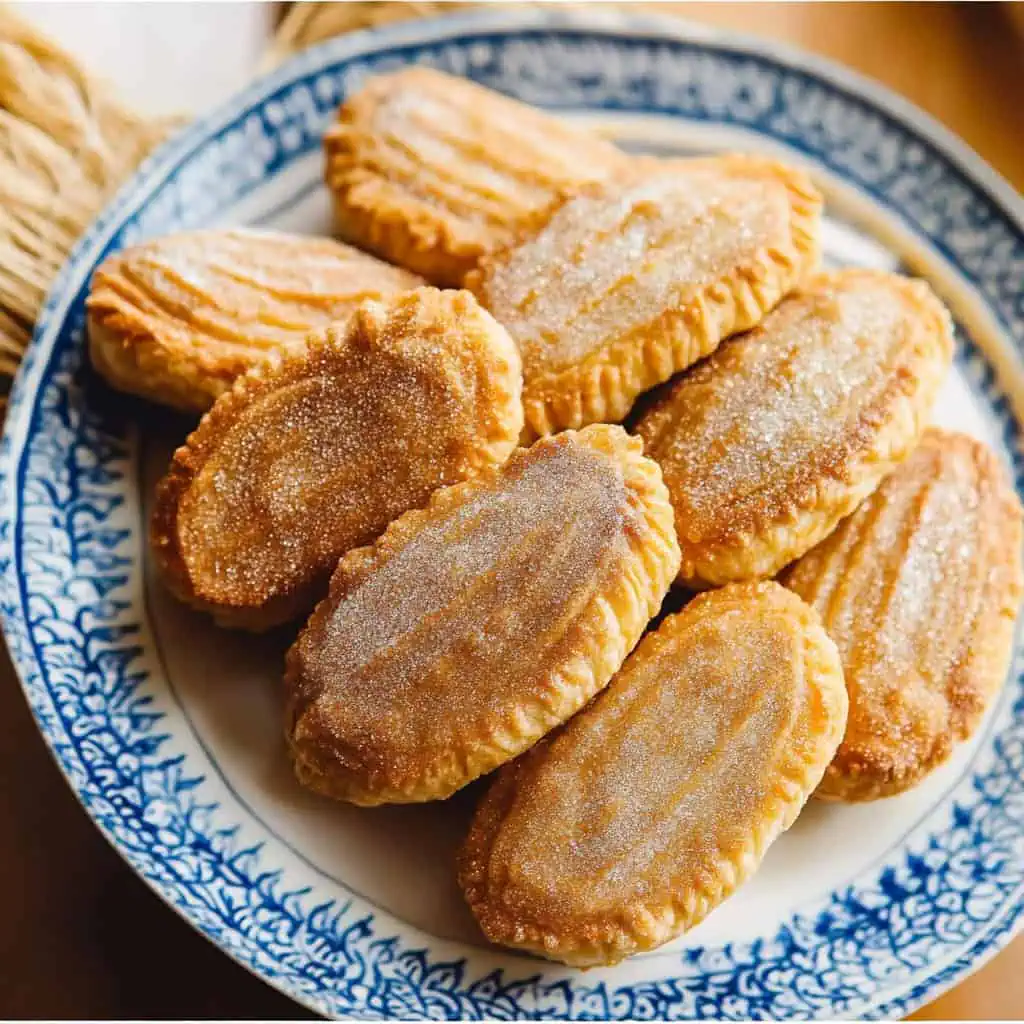






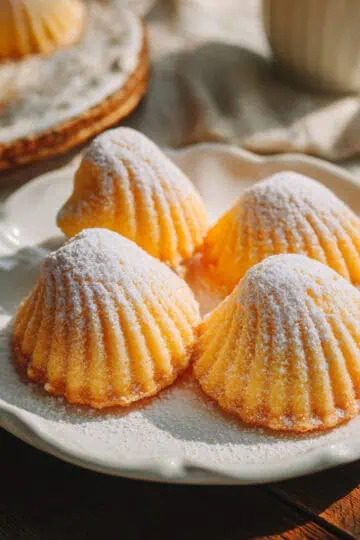
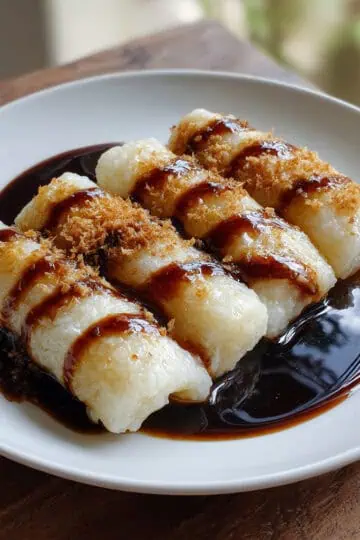
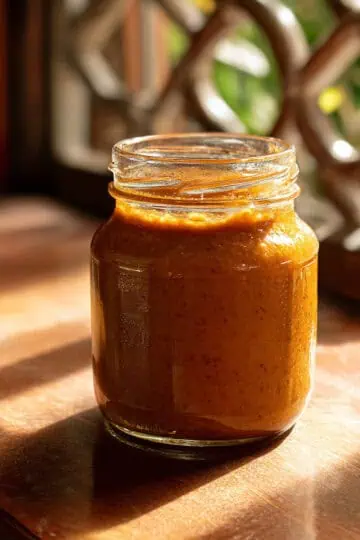
Comments
No Comments